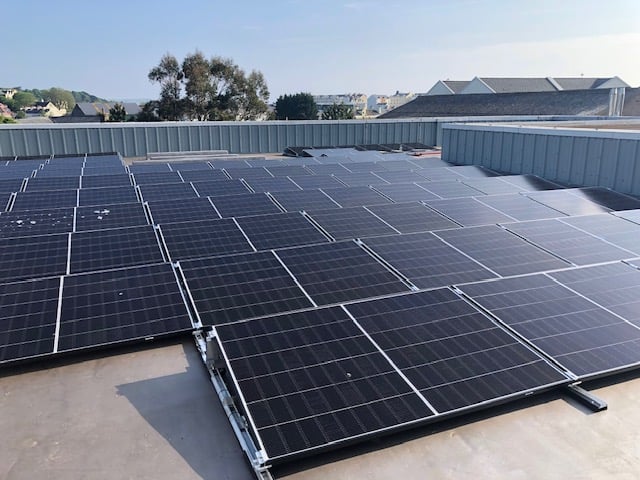A new solar panel project in Ramsey has saved the town over £7,000 in electricity costs since its installation.
The panels were installed at the top of Ramsey Town Hall in May last year, with Ramsey Town Commissioners hoping to take advantage of the environmental benefits of the devices.
After looking into the possibility of electricity saving through solar installation, the commissioners put forward a proposal of a 21kw photovoltaic solar array of 50 panels, manufactured by SolarEdge.
The proposal was presented to the Board of Commissioners in late 2023, and then agreed at a cost of £29,000, with the successful contractor being ‘R Turner Electrical Ltd’.
Since May 2024, the commissioners believe that the ‘installation has outperformed the design’ based on 12 months of statistics.
These figures include an estimated 4.3 year payback period for the installation, with the original payback period being 5.7 years.
In the twelve months, the commissioners say they’ve used 23.4 megawatt hours of their own generated power, and exported 2.53 megawatt hours to the grid - this equates to a saving of £7,050.00 for the first year.
It is also estimated that nearly 11,000 tons of CO2 emissions have been prevented, and the equivalent of 327 trees planted.
Looking back at the project, Richard Kaighen, deputy housing and property manager at Ramsey Town Commissioners, said: ‘Conversations about this solar panels started in 2022.
‘We had a large flat roof on the back of our building, and it made sense that we put some sort of solar array on there that would help assist with our green objectives.
‘As the local authority, we were buying into low carbon emissions and trying to keep our global footprint as minimal as possible.’
The solar panel installation only took four days, and was a relatively straightforward operation due to the flat roof, while they also used a teleporter to lift the panels onto the roof which helped to save on scaffolding costs.
Further ideas also came across from the commissioners to enhance the efficiency of the panels as much as possible.
‘Before the panels were installed, our own workforce painted the roof surface with a specialised solar reflective paint. As we’d decided on bi-facial panels, this would help harness the reflective energy off the roof surface to enhance the power output,’ Richard explained.
‘The panels we chose also use optimisers, and this helps the panel to continue generating and not shutting down should it be compromised by things such as bird droppings.’
The panels are expected to save roughly £270,000 over 24 years, but this isn’t the only eco initiative the commissioners are currently exploring.
The local authority is proposing to present a similar solar installation for its workshop depot within the next budget process, as well as currently having three electric panel vans used by the maintenance team, each with a 3.35 kw motor.
An external refurbishment of 37 properties will also take place in mid-October, which will include integrated PV panels installed within new roofs.




